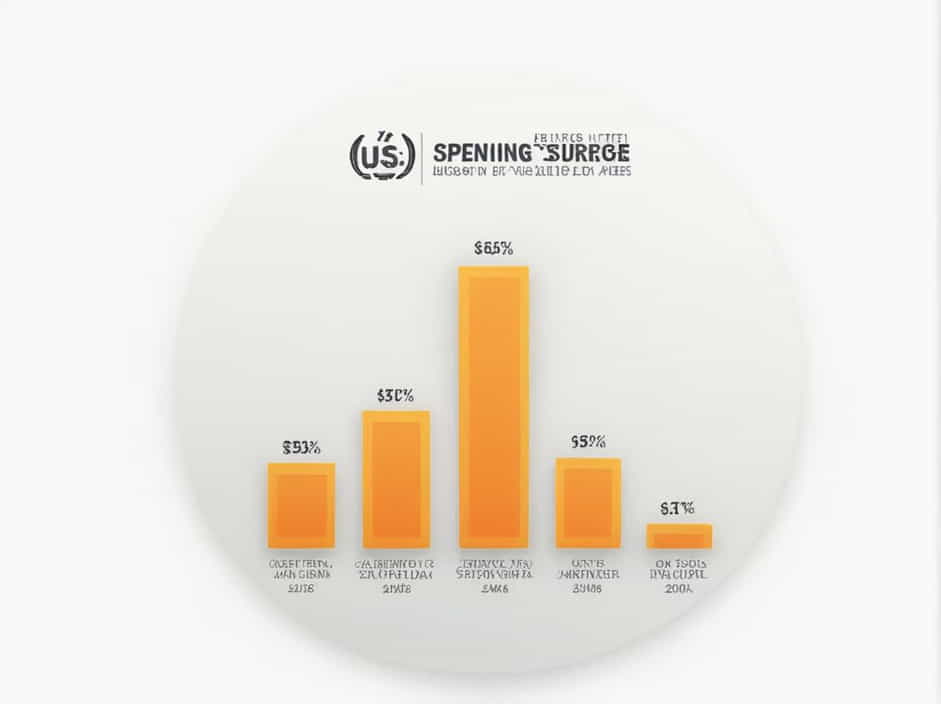Understanding the patterns of U.S. government spending over time is crucial for comprehending the nation’s fiscal policies and economic health. This topic delves into the historical trends of federal expenditures, highlighting significant changes and the factors influencing these shifts.
Historical Overview of Federal Spending
Early 20th Century to Post-War Era
In the early 1900s, federal spending was relatively modest, primarily focusing on defense, infrastructure, and basic public services. However, significant events such as the Great Depression and World War II led to substantial increases in government expenditures to stimulate the economy and support the war effort.
Post-War Expansion
The post-war period saw continued growth in federal spending, driven by programs like the G.I. Bill, interstate highway construction, and the expansion of social welfare programs, including Social Security and Medicare.
Federal Spending from 1977 to 2023
The table below illustrates the federal spending, federal debt, and gross domestic product (GDP) for selected fiscal years between 1977 and 2023:
| Fiscal Year | Federal Spending (in billions) | Federal Debt (in billions) | GDP (in billions) |
|---|---|---|---|
| 1977 | $409 | $705 | $1,974 |
| 1980 | $591 | $909 | $2,727 |
| 1990 | $1,253 | $3,206 | $5,980 |
| 2000 | $1,789 | $5,629 | $10,252 |
| 2010 | $3,457 | $13,562 | $14,964 |
| 2020 | $6,554 | $26,945 | $21,433 |
| 2023 | $6,135 | $31,123 | $25,463 |
Note: Figures are in nominal dollars and sourced from historical budgetary data.
Factors Influencing Federal Spending
Several key factors have contributed to the fluctuations in federal spending over the years:
1. Economic Stimulus Measures
During economic downturns, the government often implements stimulus packages to revive economic activity. For instance, the 2008 financial crisis prompted significant federal spending to stabilize financial institutions and support economic recovery.
2. Military and Defense Expenditures
Periods of conflict or heightened security concerns, such as the Cold War, the wars in Iraq and Afghanistan, and ongoing defense commitments, have led to increased defense spending.
3. Social Welfare Programs
The expansion of programs like Social Security, Medicare, and Medicaid has contributed to rising mandatory spending, reflecting demographic changes and increased healthcare costs.
4. Interest on Federal Debt
As federal debt grows, so do the interest obligations. Rising debt levels have led to higher interest payments, impacting the allocation of federal resources.
Recent Trends and Observations
Post-2000 Spending Surge
The 21st century has witnessed a notable surge in federal spending, influenced by factors such as:
-
Response to Economic Crises: The 2008 financial crisis and the COVID-19 pandemic prompted substantial government intervention to support the economy and public health.
-
Defense and Security: Ongoing military engagements and investments in homeland security have sustained elevated defense expenditures.
-
Healthcare Costs: Increasing healthcare expenses have driven up costs for federal health programs.
Spending Relative to GDP
Analyzing federal spending as a percentage of GDP provides insight into the government’s fiscal footprint:
-
1977: Federal spending was approximately 20.7% of GDP.
-
2000: This ratio declined to about 17.5%, reflecting economic growth and budgetary restraint.
-
2020: In response to the pandemic, spending surged to nearly 30.6% of GDP.
-
2023: Spending moderated to around 24.1% of GDP as emergency measures tapered off.
Implications of Rising Federal Spending
The trajectory of federal spending carries several implications:
1. Budget Deficits and National Debt
Persistent budget deficits, where expenditures exceed revenues, have contributed to the accumulation of national debt. As of 2023, the federal debt surpassed $31 trillion, raising concerns about fiscal sustainability.
2. Interest Obligations
Growing debt levels lead to higher interest payments, which can crowd out funding for other priorities and limit fiscal flexibility.
3. Policy Debates
The appropriate level of federal spending remains a contentious issue, balancing the need for public services and investments against concerns about debt and taxation.
Examining U.S. government spending over the years reveals a complex interplay of economic, political, and social factors. Understanding these trends is essential for informed discussions on fiscal policy and the nation’s economic future.
